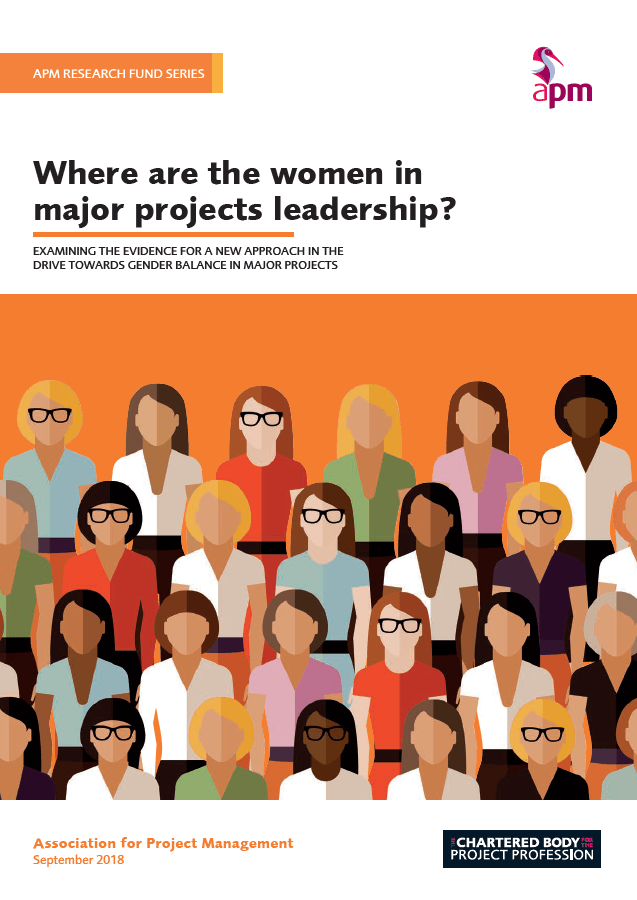Women in Major Projects Leadership
Introduction
This research project aims to address the representation of women in the leadership of major projects.
It forms part of a broader action research programme (ARPL) on the leadership and delivery of major projects.
The judging panel noted that this was a very good research proposal that provides an attractive collaborative alliance of partners for engagement in supporting the diversity agenda.
How to cite this research
Pritchard, S. & Miles, E. (2018). Where are the Women in Major Projects Leadership? Association for Project Management. https:doi.org/10.61175/WKFF6356

What is the research?
One of the critical success factors for the delivery of projects is leadership diversity, including appropriate gender balance. However, women are seriously under-represented in the leadership teams of major projects. We want to understand the evidence for this; the explanations for why this might be the case; to explore ‘good practices’ - what helps to address this (and indeed, what doesn’t); and to craft strategies, with participating organisations, to improve the situation.
The study forms part of a broader action research programme on the leadership and delivery of major projects made up of a consortium of partner organisations from infrastructure, transport, health, defence, technology, energy, logistics, higher education, policy and audit, national and local government. Guided by an Advisory Council of senior and seasoned academics and leaders in the field, our focus is on the following research strands:
- the 'knowing-doing gap';
- leadership in complex systems;
- architectures for learning;
- better metrics for complex projects;
- women in major projects leadership.
Why is it important?
The business case for diversity in organisational leadership has been established: more diverse teams make better decisions and achieve better outcomes. This is especially true for complex situations which have to address the needs of multiple and unaligned stakeholders. The past forty years have seen sustained efforts to improve the participation and representation of women in the leadership of organisations. The Davies Report (2011) evaluated the arguments for change at Board level and called for voluntary actions. Spearheaded by, among others, 30% Club, this campaign has seen (with some important caveats) notable success.
The progress witnessed in broader organisational life has yet to be observed in major projects. The UK Government calculates that over 90% of policy (and over £500bn of spend) is now delivered through major projects. But in spite of considerable investment and attention, NAO identifies that 30% still report red or red/amber prospects for delivery; an improvement in project leadership would have a significant impact. Major projects are often delivered through temporary and provisional organisational forms, partnerships or bespoke enterprises: they can be highly visible - and high stakes.
These projects are often politically sensitive, nationally or internationally significant, high cost, often contested, and using novel technologies. Such conditions can lead to more conservative, more opaque and arguably more inequitable processes for recruitment, retention and promotion.
Furthermore, project leaders have historically come from the STEM fields; these are disproportionately occupied by men, which in turn impacts upon the leadership pipeline.
The capacity (and capability) gap is growing across all sectors for the leadership and delivery of major projects.
The challenges for the recruitment, retention and development of future leaders and leadership teams for major projects is clear: we argue that a gender perspective is overdue.
Who is the intended audience?
This research will be of interest to project planners and evaluators in the public and third sector, but may have wider implications in terms of stakeholder management more broadly.
